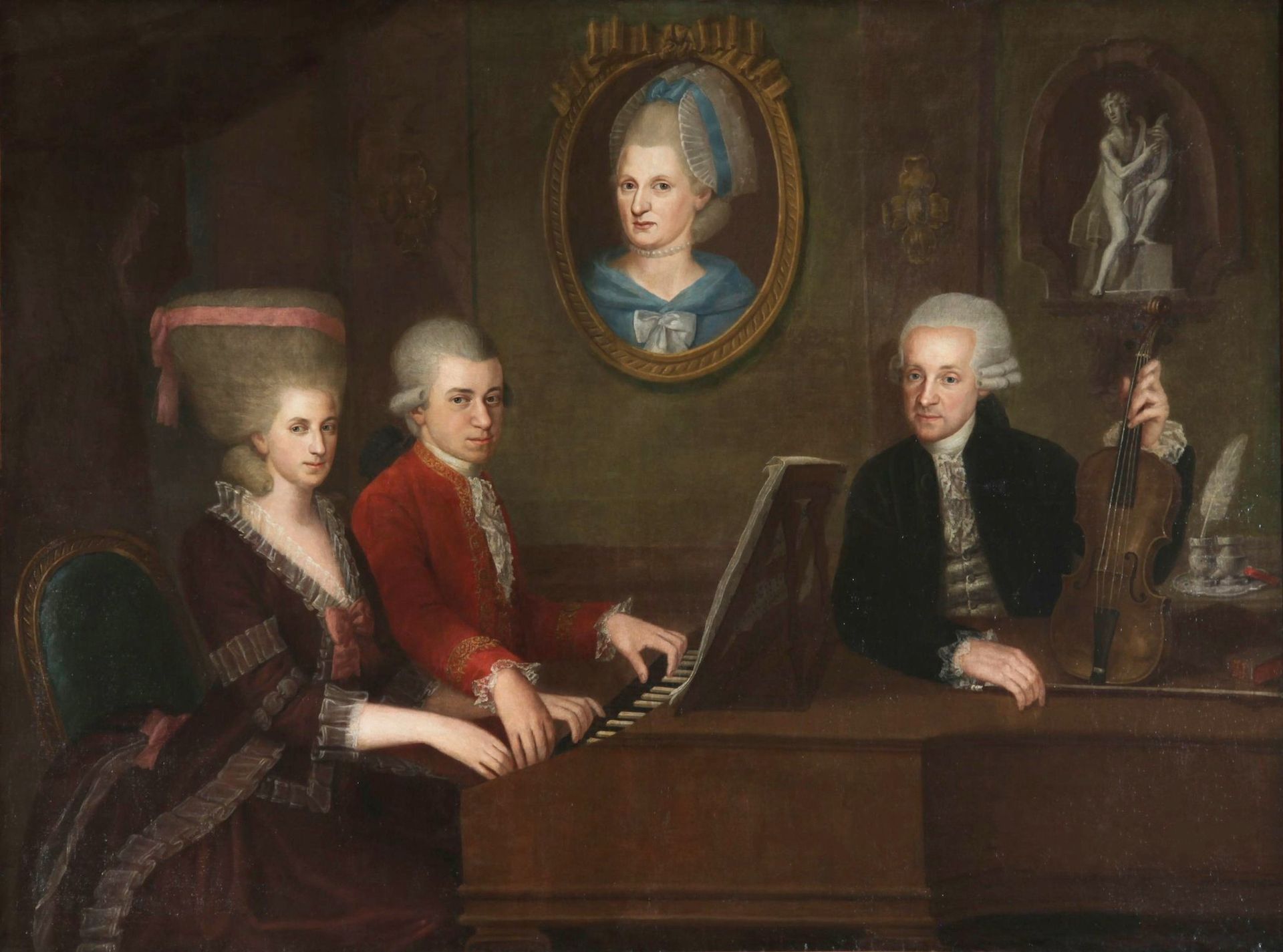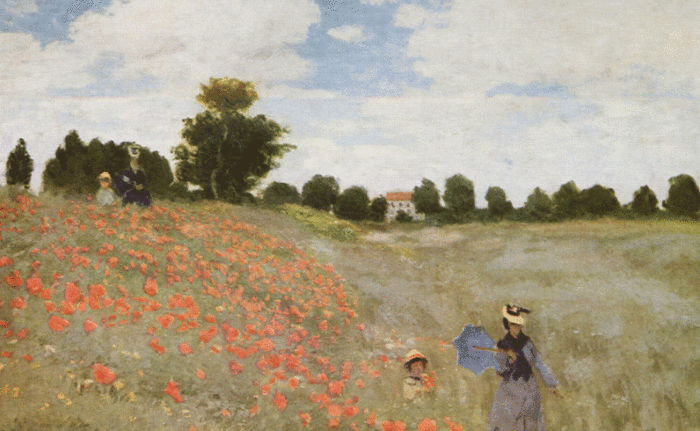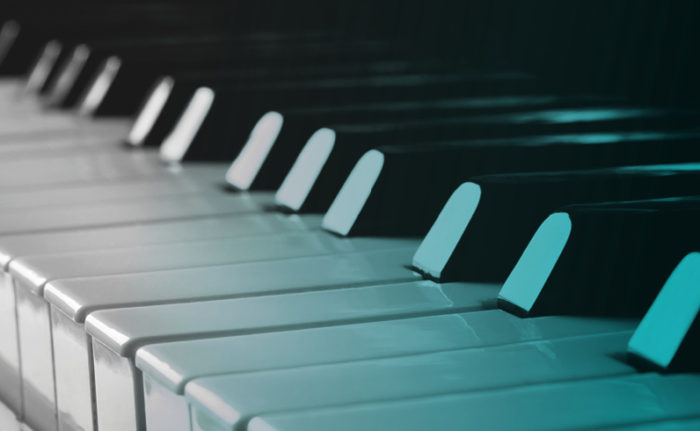On March 26, 28, and 29, conductor Matthias Pintscher and pianist Cédric Tiberghien team up for Mozart’s Piano Concerto No. 20, an eclectic program of works by Mozart, Debussy, and Webern. In this post, discover Mozart’s dark and stormy Piano Concerto No. 20, possibly the composer’s most popular work for piano and orchestra.

In keeping with the norms of his day, most of Mozart’s compositions are in major keys, but his forays into minor tonalities form some of his most striking works. D minor in particular seemed to have had a special significance for him; both his opera Don Giovanni and his Requiem are centered on this key. His Piano Concerto No. 20 is no exception. Composed in 1785 at the height of his popularity in Vienna, the piece was an immediate success at its February 11 premiere. Following his usual practice, Mozart performed the solo part himself, leading the orchestra from the keyboard. In a letter to Mozart’s sister, his father Leopold reported, “The concerto was incomparable, the orchestra excellent,” but also noted that “the copyist was still working when we arrived, and your brother did not even have time to play the rondo [the last movement] through, as he had to look through the copying,” suggesting that Mozart had once again waited until the last minute to put music on paper.
As was common practice in Mozart’s day, the first movement begins with an orchestral introduction. The opening looks forward to the dark music Mozart would write for the penultimate scene of Don Giovanni two years later. In addition to the D minor tonality, the uneasy syncopated violins recall Don Giovanni’s confrontation with the statue that drags him to hell; the drumroll-like figures in the low strings resemble the statue’s knocks at the door:
https://www.youtube.com/watch?v=wGo_faB5bOQ&t=2h48m20s
These ideas begin softly, but soon become more forceful as the music begins a transitional passage. The orchestra pauses as if taking a breath, and the woodwinds attempt to introduce a contrasting idea; the stormy music, however, resumes before it can fully unfold.
The piano enters with a new theme of its own, a quiet, pathetic melody. When the orchestra returns to the brooding drumroll-theme that opened the movement, the soloist joins it with fast, agitated passagework. After the transition, the woodwinds once again begin their contrasting idea, but this time it leads to a fully developed melody for the soloist in F major. After an orchestral passage, the soloist reenters with a brighter version of the music it first played. This solo theme alternates with the orchestra’s ominous drumroll music, as if the piano is in dialogue with some antagonist. The music becomes more intense before dying away to a reprise of the movement’s main ideas. The soloist’s once bright F major theme returns in the dark, main key of D minor. Near the end of the movement, the orchestra comes to a grand pause, and the soloist plays a cadenza—an extended unaccompanied passage that Mozart would have improvised on the spot. Many cadenzas have since been written for the concerto (see the end of this post).
Mozart titles the slow second movement “Romance,” a term which usually indicates a piece in a simple, vocal style with a main theme and one or two contrasting middle sections. This Romance is no exception; following an ABACA pattern, it begins with a lovely melody that provides respite after the storm and stress of the first movement. After an exquisite B section which continues the tranquil mood, the shadows return in the agitated C section.
The fire and brimstone of D minor return as the soloist launches the finale with a theme punctuated by hair-raising, dissonant chords. This theme alternates with contrasting ideas, including a cheerful, major-key tune for woodwinds. After many developments, the orchestra stops and the soloist plays a final cadenza. The ensuing coda turns to the bright key of D major. At the theater, 18th-century audiences typically demanded happy endings, even from tragedies—in Mozart’s opera, for instance, after Don Giovanni descends into hell the other characters return to assure us that “Thus is the fate of all evildoers.” The cheerful woodwind theme that returns to end the concerto seems to offer listeners a similar optimistic resolution.
In the early 19th century, changing tastes and standards of virtuosity meant that many of Mozart’s piano concertos went unperformed in public for many years, but thanks to its brooding moods, this concerto did not suffer the same fate. Johann Nepomuk Hummel, Ludwig van Beethoven, Clara Schumann, Johannes Brahms, and Ferruccio Busoni all played it as part of their careers as pianists, and they all also composed cadenzas for it (see links). It continues to move and delight audiences today. —Calvin Dotsey
Don’t miss Mozart’s Piano Concerto No. 20 March 26, 28, and 29! Learn more and get tickets.




This music is understood and deeply felt. No need for opera it’s all here in the keys and the orchestra. Humanity struggle and the need to blow off the rich draped in luxury. Amazing the pour immigrants knew opera before the rich took over the pleasure of music and stage.